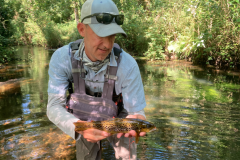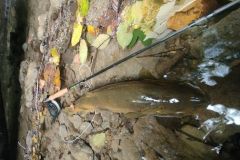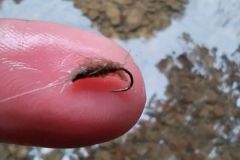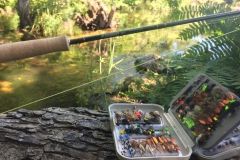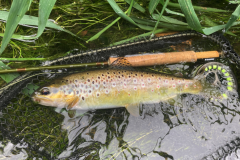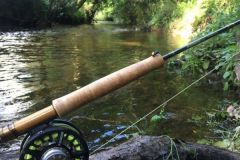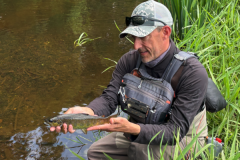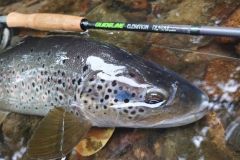Chironomid fishing
Chironomid fishing involves imitating the different phases of this insect, present in all the world's lakes and reservoirs.
Chironoma is the staple food of all fish, especially trout.
When reservoir fishing, it is essential to try to fishing with chironomid imitations during the day. Trout eat them regularly, even in the depths of winter. Hatching can occur at any time of day.
With floating silk, you can use a train of 2 or 3 chironomids to imitate different stages. For example, mount an adult imitation (floating fly) on the stem and one or two nymphs underneath.
You can also use a dry fly of your choice and place a chironomid larva underneath. You'll need to find the right height, depending on fish activity.
In slow intermediate silk or midge-tip, the most frequently used technique is the "washing line" . This involves supporting a nymph between the tip of the fly line and the floating fly.
In intermediate lines, we often use one to three chironomid imitations, varying in size and color. Each fly is often spaced 1 to 1.5 m apart for fishing at different water heights.
The chironomid nymph can be combined with a booby by placing it underneath the sink line. The booby will support the fly and lift it off the bottom.
It's up to the angler to adapt to the conditions and find out how high the fish are moving and feeding. You have to juggle all these different techniques to find the fish.
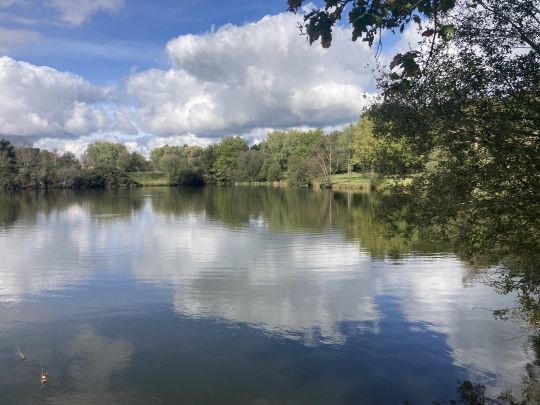
Assembly of a chironomid nymph
Materials used to assemble this chironoma nymph :
- Kamazan B110 hook in size 10
- Uni-thread black
- Tinsel ultra wire fine silver
- Red holographic flashabou
- Loon thin UUV resin
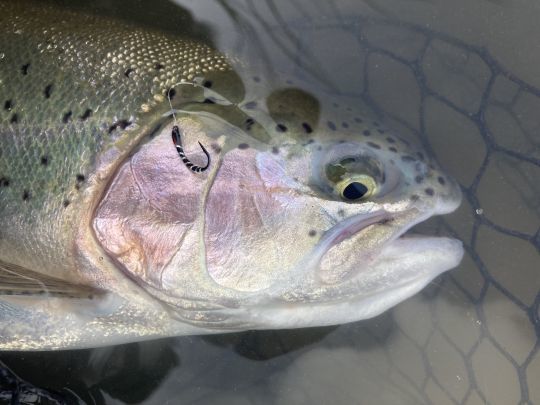
A wide range of mounting options to suit all conditions
This rig is a model I like and with which I catch many trout in reservoirs.
However, I have many variations of chiro larvae to adapt to the trout's desires.
You can vary this set-up by changing the color of the body (olive, gray, white, wine, etc.), changing the color of the cheeks, adding a tuft to the tail or head to imitate the gills and appendages of these larvae, and of course the size, as chironomids include a wide variety of insects of different sizes and colors.

 /
/ 



